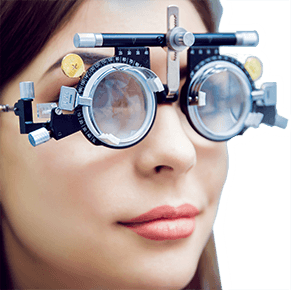Computer ergonomics for healthy vision

Prolonged use of computers and other digital devices strain the eyes as well as other parts of the body.
Anyone who uses a computer for extended periods — whether on the job, at school or at home for enjoyment — is at risk for headaches, burning eyes, red eyes, a stiff neck and other symptoms that comprise computer vision syndrome.
One way to reduce computer-related discomfort by becoming more aware of your body during computer work and adjusting your workstation and viewing habits to avoid these problems.
What is "computer ergonomics"?
Ergonomics is the science of designing a job, equipment and/or workplace to fit the worker.
The goal is to optimize the "fit" between each worker and his or her work environment to optimize performance and reduce the risk of repetitive strain injuries.
Computer ergonomics (sometimes called visual ergonomics) addresses ways to optimize your computer workstation to reduce the specific risks of computer vision syndrome, neck and back pain, carpal tunnel syndrome and other disorders affecting the muscles, spine and joints.
Computer ergonomics tips
You don't need an expensive consultant to create a computer workstation that reduces your risk of stress, computer eye strain and potential injury from prolonged computer use.
Here are several helpful computer ergonomics tips recommended by the U.S. Department of Labor's Occupational Safety & Health Administration (OSHA):
Sit so your head and neck are upright and in-line with your torso, not bent down or tilted back.
Face your computer screen directly. Avoid viewing your screen with your head turned or your back twisted.
Keep your elbows comfortably close to your body.
Use a chair that provides support for your lower back and has a cushioned seat with a contoured front edge.
Keep your mouse close to your keyboard so you don't have to reach for it.
Position your computer display so the top of the screen is at or slightly below eye level. This will allow you to view the screen without bending your neck.
Adjust the position of your display to prevent reflections of overhead and outdoor lighting appearing on your screen.
Put your monitor close enough to your eyes so you can comfortably read text on the screen without leaning forward.
When working with print documents, use a document holder that positions them at the same height and distance as your computer screen.
Use a hands-free headset when talking on the phone while working at your computer.
Also, you can increase your comfort and reduce physical stress by adjusting the height of your chair and desk so:
Your upper arms are perpendicular to the floor, not stretched forward or angled backward
Your forearms, wrists and hands form a 90-degree angle with your upper arms
Your thighs are parallel to the floor and your lower legs are perpendicular to the floor
Your wrists and palms are not resting on sharp edges
If you wear bifocals or trifocals, you should be able to comfortably view your computer screen without tilting your head back. If this is not the case, consider purchasing computer glasses.
Following these tips will help you avoid stressful postures that lead to headaches, neck and back pain and computer vision syndrome.
But remember, prolonged computer work — even at an ideal workstation — is stressful to your body and your eyes.
To relieve stress that can lead to computer vision syndrome and physical disorders, be sure to take frequent breaks when working long hours at a computer. Stand up and move away from your computer for short breaks every 20 to 30 minutes, if possible.
During these quick breaks, stretch your arms and back, and let your eyes relax their focus by looking at something at least 20 feet away.
Also, blink fully and frequently to reduce your risk of dry eyes from computer use, and apply artificial tears to moisten and lubricate your eyes as needed.
Page published on Friday, December 27, 2019






